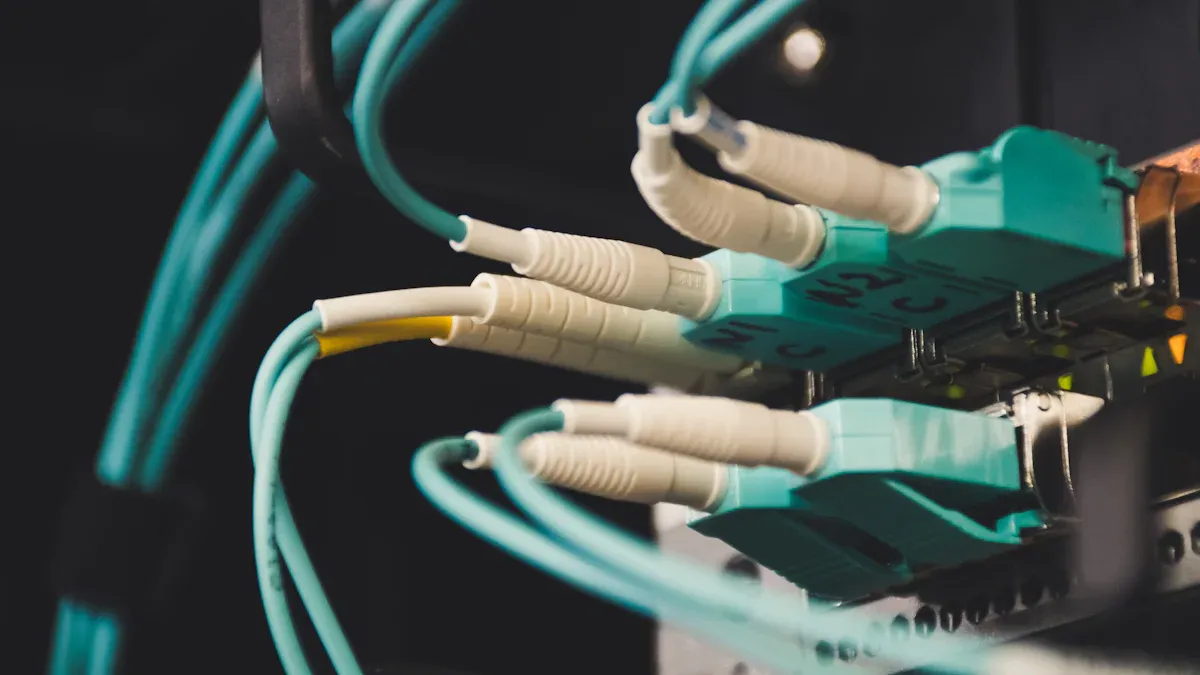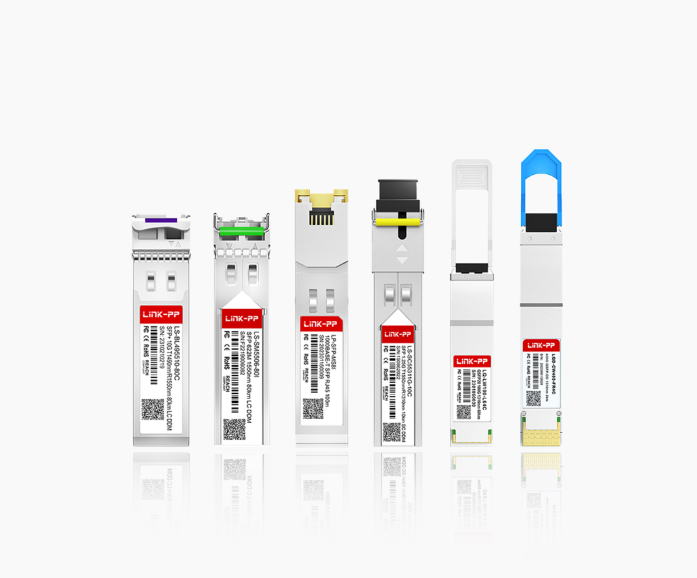
When it comes to building or upgrading a network, selecting the right SFP (Small Form-factor Pluggable) transceiver is crucial to ensure optimal performance, reliability, and future scalability. At LINK-PP, we often receive questions about how to select the best SFP for specific use cases. To help, here’s a detailed guide on the key factors you need to consider when choosing an SFP transceiver.
Cable Type and Application Environment

One of the first considerations when choosing an SFP transceiver is the type of cable that will be used in the network. Transceivers are designed to work with different types of cables, such as:
Fiber Optic Cables
Fiber optic cables are ideal for high-speed data transmission over long distances. Depending on the distance and speed requirements, you can choose between single-mode and multi-mode fiber optic cables.
Copper Cables (Direct Attach Copper - DAC)
These are used for shorter distances and are typically more cost-effective. They’re often deployed in data centers or server rooms where the transmission distance does not exceed 7 meters.
The choice of cable type will impact the selection of the transceiver and its compatibility with your network infrastructure.
Required Transmission Distance

Different SFP transceivers are designed to operate at varying transmission distances. For example, some can support a transmission distance of up to 80 km, while others might only support a few meters. It’s essential to choose a transceiver that matches your network’s requirements for optical transmission distance:
Short-Range (SR) Transceivers
Designed for distances up to 300 meters over multi-mode fiber, suitable for intra-data center connections.
Long-Range (LR) Transceivers
Can support distances up to 10-40 km over single-mode fiber, ideal for linking remote sites.
Extended Range (ER) Transceivers
These can extend transmission distances even further, sometimes over 100 km, depending on the technology.
Always determine the required transmission distance based on your network design and the location of the connected devices to ensure you don’t exceed the transceiver’s capabilities.
Data Transmission Speed
Picking the right SFP module means knowing data speed. Speed shows how fast information moves in your network. Faster speeds help your network work better and handle tough tasks.
Another critical factor when selecting an SFP transceiver is the required data transmission speed. The latest commercial products support speeds up to 400Gbps,which is fast enough for most high-performance applications, including data centers, enterprise networks, and large-scale cloud services.
However, the network's speed requirements can vary depending on the application, so it’s essential to consider whether your current network will need to handle these higher speeds or if a lower-speed transceiver (such as 1Gbps, 10Gbps, or 25Gbps) will suffice.
Note: As the demand for faster networks grows, manufacturers are already working on products that support 800Gbps speeds, which will be available in the near future. While these higher speeds may be overkill for today’s typical applications, it’s wise to future-proof your network by considering transceivers that offer scalability as your needs evolve.
Standards Compliance and Compatibility
Picking the right SFP module means checking standards and compatibility. This helps your network work well and avoids problems with devices.
Vendor Compatibility
Some devices may only support SFPs from specific vendors, meaning a third-party transceiver might not be compatible with your equipment. This is why it's essential to always check the compatibility report or consult with the manufacturer before making a purchase.
Tip: Always check compatibility to avoid wasting money or time.
Protocols and Standards
Ensure that the SFP transceiver you choose complies with the relevant network protocols, such as IEEE 802.3, and supports the desired transmission speed and distance. Using a non-compliant transceiver can result in suboptimal performance or failure to establish a connection.
Price vs. Performance
When choosing an optical module, cost is usually the determining factor, but it should not be at the expense of quality or performance. Be sure to choose a reputable supplier that provides reliable products and after-sales support - LINK-PP.
Market Trends
Market studies show why balancing cost and quality is key:
Check prices from different sellers to know the average cost. Avoid very cheap modules—they might not last long.
Reviews from sites like CNET and TechRadar praise 1G SFP modules for being reliable and energy-saving. They cost more upfront but save money later with fewer repairs and better performance.
FAQ
What is an SFP transceiver, and why is it important?
An SFP transceiver is a small device that connects network equipment to cables. It helps send data quickly and allows flexible network setups. You can use it to improve or grow your network without replacing everything.
How do I check if an SFP transceiver works with my device?
Look at your device's compatibility guide or ask the vendor. Find modules that follow Multi-Source Agreement (MSA) rules. These rules let different brands work together, making it easier to mix parts.
Can I use an SFP transceiver for both short and long distances?
Yes, but you need the correct type. Short-range (SR) transceivers use multimode fiber for up to 550 meters. Long-range (LR) transceivers use single-mode fiber and work over 10 kilometers or more.
What affects how long an SFP transceiver lasts?
Conditions like heat and moisture can shorten its life. Handle it carefully and clean fiber ends often to make it last longer. High-quality transceivers are more durable and work better.
Are third-party SFP transceivers good to use?
Many third-party transceivers meet MSA rules and work well. Always check if they fit your system. Trusted brands like LINK-PP offer reliable options that balance price and quality for smooth networks.




